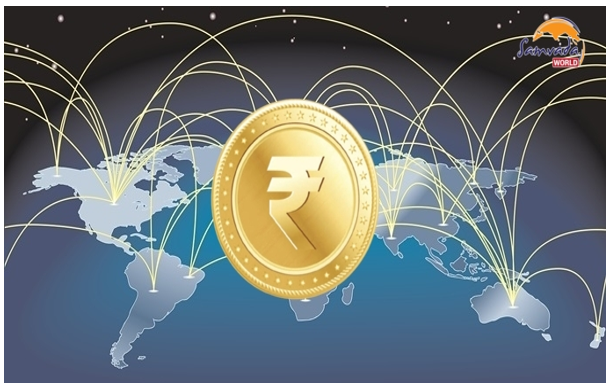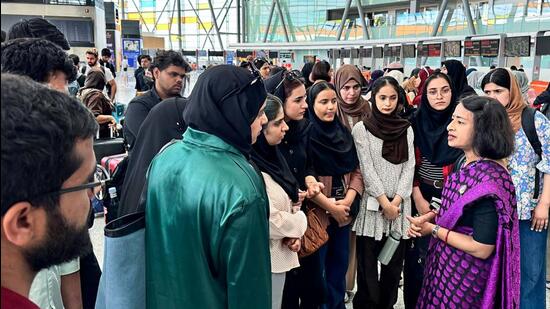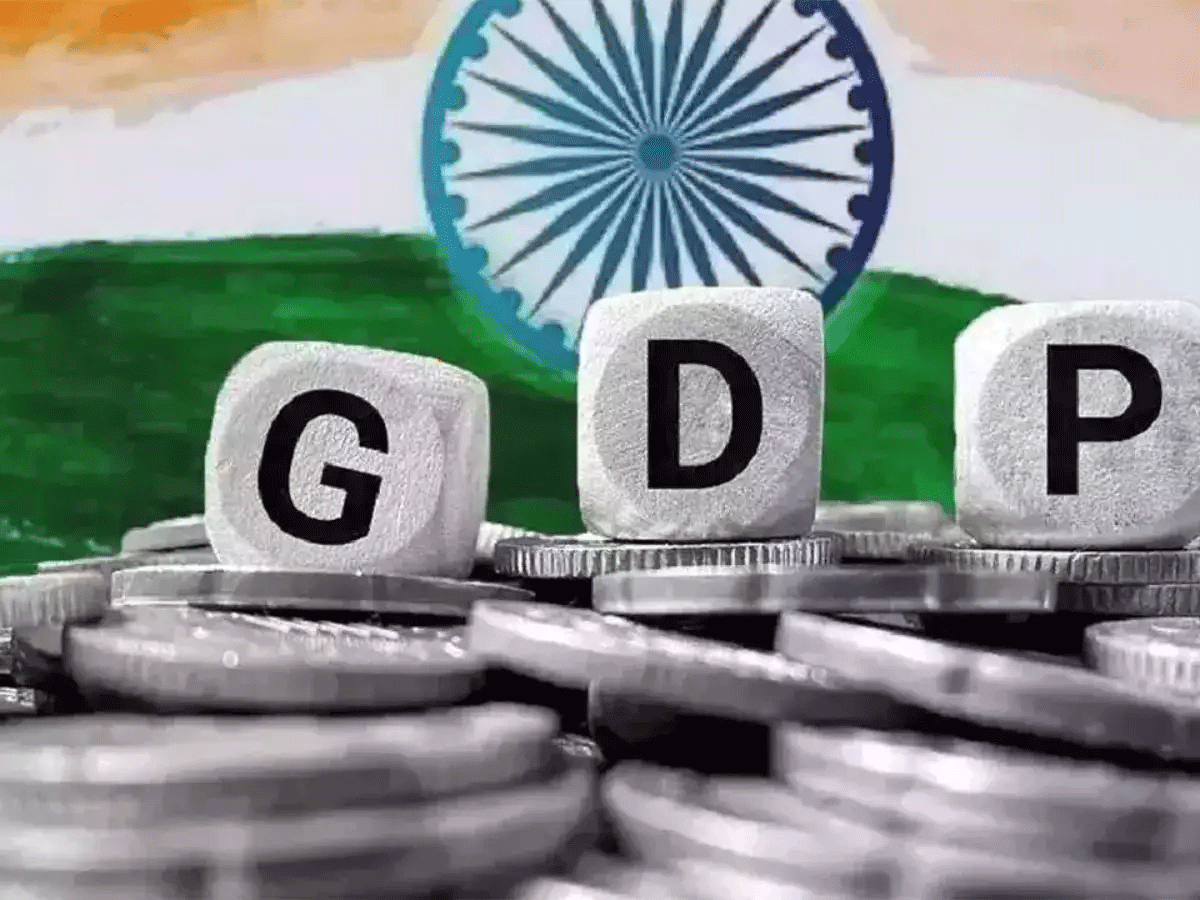- Courses
- GS Full Course 1 Year
- GS Full Course 2 Year
- GS Full Course 3 Year
- GS Full Course Till Selection
- Answer Alpha: Mains 2025 Mentorship
- MEP (Mains Enrichment Programme) Data, Facts
- Essay Target – 150+ Marks
- Online Program
- GS Recorded Course
- Polity
- Geography
- Economy
- Ancient, Medieval and Art & Culture AMAC
- Modern India, Post Independence & World History
- Environment
- Governance
- Science & Technology
- International Relations and Internal Security
- Disaster Management
- Ethics
- NCERT Current Affairs
- Indian Society and Social Issue
- NCERT- Science and Technology
- NCERT - Geography
- NCERT - Ancient History
- NCERT- World History
- NCERT Modern History
- CSAT
- 5 LAYERED ARJUNA Mentorship
- Public Administration Optional
- ABOUT US
- OUR TOPPERS
- TEST SERIES
- FREE STUDY MATERIAL
- VIDEOS
- CONTACT US
Internationalization of Indian Rupee
Internationalization of Indian Rupee
08-07-2023

Latest Context:
Recently, a Reserve Bank of India appointed working group recommended inclusion of the rupee in the Special Drawing Rights (SDR) basket of the IMF to increase the pace of internationalisation of rupee.
What is Special Drawing Rights (SDR) basket?
- Basically, the SDR basket refers to a collection of currencies that make up the International Monetary Fund's (IMF) unit of account called Special Drawing Rights.
- Special Drawing Rights are a form of international reserve assets created by the IMF to supplement the existing official reserves of its member countries.
- The SDR basket is currently composed of the following currencies: U.S. Dollar (USD), Euro (EUR), Chinese Yuan (CNY), Japanese Yen (JPY), British Pound Sterling (GBP).
- These currencies are selected based on their importance in international trade and finance, and their representation in the SDR basket is periodically reviewed by the IMF.
- The weights assigned to each currency reflect the relative importance of the respective countries in the global economy.
- The SDR basket serves as a unit of account for the IMF and its member countries. It is used for certain operational transactions within the IMF, such as determining the value of IMF loans and determining countries' quotas and voting rights.
- The SDR basket is periodically reviewed by the IMF to ensure its composition reflects the changing global economic landscape.
What is Internationalisation of Rupee?
- The internationalization of a currency refers to the process by which a currency becomes widely used and accepted beyond the borders of its home country.
- In the context of the Indian Rupee (INR), internationalization of the rupee refers to efforts aimed at promoting the wider use and acceptance of the Indian currency in international transactions.
- Internationalization of the rupee has several potential benefits for India. It can reduce transaction costs, increase efficiency in trade and investment, enhance financial market development, and promote the country's economic and financial integration with the global economy. It also helps reduce dependence on foreign currencies, particularly the U.S. dollar, for international transactions.
Efforts to internationalize the rupee involve a range of measures, including:
- Liberalization of currency controls: India has gradually relaxed restrictions on foreign exchange transactions, allowing greater convertibility and ease of use for the rupee in international transactions.
- Expansion of offshore markets: The establishment of offshore rupee markets, such as the Non-Deliverable Forward (NDF) market, allows market participants outside India to trade and hedge in rupee-denominated instruments.
- Bilateral currency swap arrangements: India has entered into currency swap agreements with various countries, enabling the settlement of trade and investment transactions in rupees, reducing the need for foreign currency conversions.
- Encouraging rupee settlement in international trade: Indian authorities promote the use of rupee settlement in bilateral trade agreements and encourage exporters and importers to use rupee-based mechanisms for settling trade transactions.
- Development of rupee-denominated financial instruments: The introduction of rupee-denominated bonds, known as masala bonds, allows issuers to raise funds in rupees from international investors.
- Promoting international financial centers: The establishment of International Financial Services Centers (IFSCs) in India aims to create a conducive environment for international financial activities, including rupee-denominated transactions.
Challenges in Internationalization of Rupee are:
- Exchange rate volatility: Currency volatility can discourage international acceptance of a currency. The Indian Rupee has experienced periods of volatility in the past, which can create uncertainty and hinder its use in international transactions. Stability in the exchange rate is crucial to instill confidence in the rupee.
- Capital controls and regulatory environment: Strict capital controls and regulatory restrictions can restrict the free flow of the rupee in international markets. Liberalizing capital controls and creating a favourable regulatory environment that promotes ease of doing business with the rupee is essential for its internationalization.
- Market depth and liquidity: The depth and liquidity of the rupee market play a significant role in its internationalization. Market participants need a robust and liquid market to facilitate smooth transactions and risk management. Enhancing market infrastructure, improving liquidity, and promoting the participation of various market participants are key challenges.
- Convertibility and confidence: Ensuring the convertibility of the rupee is crucial for its internationalization. Confidence in the currency's ability to be freely converted into other currencies without restrictions or limitations is essential. Building trust among international market participants regarding the convertibility of the rupee is a challenge that needs to be addressed.
- Awareness and education: Creating awareness among international businesses and investors about the advantages and potential of using the rupee in international transactions is important. Educating market participants about the benefits, procedures, and risks associated with using the rupee can help overcome the lack of familiarity and promote its wider acceptance.
- Domestic economic stability: The stability and strength of the domestic economy have a significant impact on the internationalization of a currency. Ensuring sound economic fundamentals, low inflation, fiscal discipline, and a robust financial system are crucial for instilling confidence in the rupee as an international currency.
- Competition from established international currencies: The Indian Rupee faces competition from major international currencies like the U.S. dollar, euro, and yen, which are widely accepted and have well-established markets. Overcoming the dominance of these currencies and providing competitive advantages to the rupee requires concerted efforts and a long-term strategy.
Conclusion:
Addressing these challenges requires a coordinated approach involving the government, regulators, central bank, financial institutions, and market participants. Continuous reforms, improving market infrastructure, enhancing liquidity, and building confidence in the rupee are vital for the successful internationalization of the Indian Rupee.
Must Check: IAS Coaching Centre In Delhi



